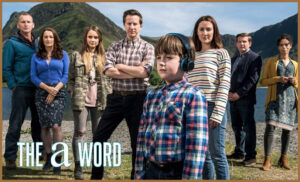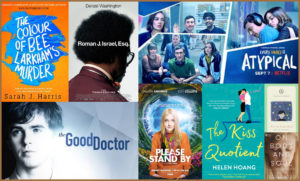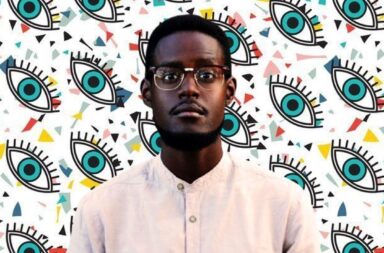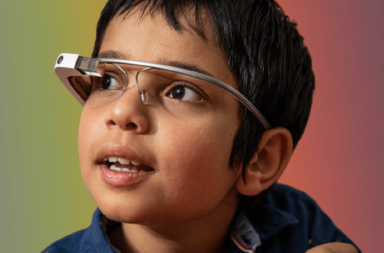Unforgettable stories are forged from one of two places: an extraordinary character in an ordinary location or an ordinary character in an extraordinary world; too much of one and your story becomes out of touch, too little of each and your story becomes well, The Irishman.
Yet, against all odds, the autistic view has fascinated audiences since 1969 – an unlikely development given that, within every representation of our community, there is a character who is neither unique or overly familiar in a world which, depending on your perspective, is both outside the box and bog-standard.
Shows like Atypical, books like The Rosie Project, even comics like the Fantastic Four are all living proof of this and, as 2020 continues to bring more depictions than I can find time in my calendar to cover, it seems that this isn’t a trend people will tire of soon.
In small droves, this never use to be a problem (as autism portrayals were once nothing more than a minor inclusion to the main plot) but now, as we take centre stage in full-blown features, one wrong depiction has the potential to set autism awareness back faster than you can say ‘I’m an excellent driver’.
So, how do we make sure a representation stays accurate yet interesting, and what does the future of autism in stories mean for the future of the autistic community?

How do you create an accurate and interesting portrayal of autism?
Film scholars (otherwise known as nerds) will often tell you that humans only really have 7-9 kinds of stories to tell but, the way I see it is that, if you really want to boil a plot down to its main components, then it doesn’t matter whether you’re reading War and Peace or watching Shrek the 3rd as, the truth is, there’s only 1 real storyline – and it comes in three parts:
- A normal is established
- The normal is challenged
- A new normal begins
In this regard, stories focusing on autistic people were always going to be popular because, as many in our community can attest, this is our life: we grow up unaware that our way of thinking is different to that of the norm until, one day, we have to deal with the reality of how different our way of thinking truly is, subsequently leading to an uphill battle which hopefully closes in a happy ever after.
The problem is that, in many books, TV shows or films where autism is a central part, it’s too often the case that autism itself will be the challenge used to break families apart, ruin careers or miss a shot at love.
Where this is the case, it’s almost always apparent that the writer has a fundamental lack of understanding, when it comes to knowing how things go down in the autism community but, the real crime in these stories is that mishandling of autism is a missed opportunity for those that don’t realise that, yes, autism is a challenge, but it’s also a compelling normal once we learn to adapt.
Case Study: The A Word
A perfect example of this can be seen in last week’s episode of The A Word (that’s season 3 episode 1 for all you time travellers), where, right from the get-go, an altercation arises when an autistic child experiences heightened distress after seeing his unfinished bedroom in the house he is set to move into.
In a lesser show, we, the audience, would be likely to watch the son as he miraculously learned to cope with this level of change (as though uncertainty is something any autist truly learns to live with). Yet, a shift in focus to the father, who has also become frustrated due to the bedroom incident, makes things a lot more gripping – as we’re not looking at something as simple as ‘Why does an autistic person react in a way that an autistic person would?’ but ‘why is a man who expects this reaction from his child distraught nonetheless?’.
By the end of the episode, it’s clear that the experience has made him reflect on the current situation as it is now. A reflection that has caused the father to confront his feelings of why he needs new accommodation, as well as the realisation that, although he may own a building with four walls, windows and doors, right now, that house is not a home.
Key Takeaway:
It’s a lazy writer who looks at autism and views it as a problem to be resolved, but taking the opposite approach and exploring why the person who sees autism as a problem IS the problem, is way more gripping.

What makes an autistic character interesting?
There’s an incredible Ted Talks by director JJ Abrams, in which he discusses: how magnetizing the unknown is, how uncertainty is all around and how our answers to the unexpected are rarely as interesting as the unexpected itself. Abrams deems this wonder The Mystery Box and, in many ways, I feel this is a great way to look at autistic characters.
For example, it’s no coincidence that many of the most interesting autistic characters our community has have never openly disclosed their diagnosis (Sherlock, Temperance Brennan, Newt Scamander). Instead, these characters spend years ducking and weaving from labels and, in the place of confirmation, our speculation builds, as we become infatuated with an individual’s characteristics, before they can be viewed as just another occupant of the spectrum.
That’s not to say that all autistic characters should hide their diagnosis though as, while JJ’s theory is great, anyone who watched the series finale of Lost will know that creating intrigue without explanation can be thoroughly unsatisfying. The only problem is that, in many cases, when someone starts by creating an autistic character, they often put diagnosis before the person and then, in what can feel like a race to prove just how autistic a depiction is, the portrayal is given every quirk and trait under the sun.
To me, this is problematic for 2 big reasons:
- Having ‘they’re autistic’ as an explanation makes as much sense as it is stimulating because…
- It diminishes returns when nothing develops, and you are constantly circling back to the same naïve explanation i.e. How did they know how to do that? ‘They’re autistic’. Why did they make a scene? ‘They’re autistic’. Why do they obsess over that thing? ‘They’re autistic’. ‘They’re autistic’, ‘They’re autistic’, ‘They’re autistic’.
Case Study: Kids Like Us
When looking at how to create a truly interesting autistic character, there are few better examples than Hillary Reyl’s Kids Like Us: a novel which tells the story of autistic Martin, who moves to France and falls in love with a girl, Alice, due to her resemblance of a character from Martin’s favourite Proust book.
In addition to restricted interests, Martin also has communication challenges and experiences meltdowns when things get too much. However, one of the special things about Kids Like Us is that the book assumes we know that autistic meltdowns are a natural part of the autistic response and, as such, it never structures these moments as a big surprise because, in reality, who really would be shocked when a shaken bottle inevitably pops?
Instead, Kids Like Us does something I wish more autism books would do and places Martin, the character, as the driving force behind its narrative (and not just his actions). This creates a realistic and refreshing autistic experience, subsequently building intrigue around the character’s unpredictable development and, as perspectives and reality clash, through Martin’s experiences and expectations, the novel is all the stronger for taking this introspective approach.
Key Takeaway:
Autism is an uncertainty (and I’m not just saying this because I would love my autism to be described as ‘a mystery box’). This means that, if you set out to create an autistic character, where their autism is an answer and not a question, you’re going about it the wrong way.
The solution here is to take a step back every now and then to look at what your character is doing and, if your answer to ‘why are they doing this is’ is limited to their diagnosis, it’s time to rethink where you’re at.

The future of autistic depictions:
If the 50s were all about Westerns, the 80s coming-of-age comedies and the 2010s superhero films, then, judging by the upcoming slew of autism properties, it’s not absurd to say that the return of the roaring 20’s will be about autists (I mean, if Marvel ever decides to take a break). But, like it or not, more representation isn’t always a good thing and, with so much coming our way this year alone, I can’t help but feel apprehensive.
Chinese depictions throughout the history of cinema are perhaps the best/worst example of why I feel this way where, as early as the 1920s, Eastern representation was that of the ‘Yellow Peril’: a stereotype in which the men were initially depicted as gangsters/evil masterminds, e.g Fu Manchu, only to be later confined to the shy inarticulate dork or the silent henchman (who inevitably knows karate).
Depictions of Chinese women weren’t much better either. This is evident in how female Asians were once exclusively stern ‘dragon ladies’, prostitutes or both, only to be elevated to the current portrayal as fragile Asian princess or docile China doll – a shift which proved just as internally damaging as externally, in that Eastern populations began bleaching their skins white to meet these western set standards.
Of course, it doesn’t take the intellect of the stereotypical white autistic savant to recognize the parallels I’m about to draw. However, history has a nasty habit of repeating itself and, while autistic depictions may seem a long step away from how hindering we were perceived in the Rain Man years, our china doll is that we risk moving too far away from the idea that an autistic person can find difficulty in their traits and, in its place, create an unobtainable image of autism; where everyone must be as successful as Shawn Murphy from The Good Doctor.
Nevertheless, we shouldn’t get ahead of ourselves when the future is still to be written, but keeping in mind the tragic experience of others is important in history, so that we don’t repeat it.
For the autistic community, this means staying aware of how, for many, one portrayal can represent us all. A possibility that is avoided by recognizing that, although one autistic character will carry the weight of every stigma and stereotype which has come before, the same depiction can just as easily change our standing for those that come after.

Carry on the Conversation:
What takes an autism portrayal from good to great? Let me know your thoughts in the comments below. And, for those who want to hear my thoughts on whether having an autistic actor makes an autistic depiction better, then check out my article: Should Autistic Actors play Autistic Characters?
As always, I can be found on Twitter @AutismRevised and via my email: AutisticandUnapologetic@gmail.com.
f you like what you have seen on the site today, then show your support by liking the Autistic & Unapologetic Facebook page. Also, don’t forget to sign up to the Autistic & Unapologetic newsletter (found on the sidebar on laptops and underneath if you are reading this via mobile) where I share weekly updates as well as a fascinating fact I have found throughout the week.
Thank you for reading and I will see you next week for more thoughts from across the spectrum.


